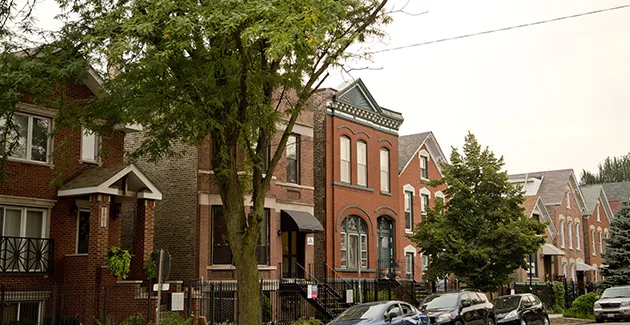Think of the advice you’ve heard for making pivotal decisions. “Look before you leap.”
“Sleep on it.”
“Never make big decisions on an empty stomach.”
These are fine maxims to live by, but will they help you in your search for the perfect Chicago apartment? Probably not.
The common regret among apartment search veterans is that they went all in on an apartment without having ample time to truly get a sense of the market. On the other hand, what if the search drags on too long and a renter keeps rejecting apartments for rent in Chicago, all in the quest for an elusive place that fully satisfies their tastes? Meanwhile, all the acceptable places that a renter previously viewed were scooped up by other eager tenants on the hunt for Chicago apartments. What can a renter do when faced with this dilemma? This is where the slightly abstract concept of optimal stopping enters the very tangible process of finding an apartment.
What is optimal stopping?
This mathematical theorem prescribes the ideal point at which people ought to stop viewing a succession of possibilities and make up their minds on a course of action. What’s the ideal point for an apartment hunter to discontinue their search and confidently declare, “I’ve seen enough?” If renters are following the guidelines of optimal stopping, then the answer is thirty-seven percent.
Renters who use the optimal stopping method should use thirty-seven percent of their time on assessing and sizing up their prospective options. If the renter has 30 days to find a new apartment, then 11 of those days -- no more, no less -- should be spent looking at all the available options. Once the renter has spent those 11 days sizing up all the apartments, then they should be prepared to commit to an apartment. Not just any apartment, but the one that surpasses the previously viewed apartments.
How does optimal stopping work?
The optimal stopping problem counsels the apartment searcher to use thirty-seven percent of their overall search period establishing a baseline of what’s acceptable and what’s unacceptable in their future apartment. After steadily going to apartment showings in this window of time, a renter should be ready to make the call on the first apartment they see that appears better than the rest.
The subjectivity of the apartment search can complicate things. But there are certain factors that can be considered universal in the apartment rental sphere, such as bedroom count, availability of natural light, convenience, safety and upgraded appliances, etc. These attributes either exist in an apartment for rent or they don’t; after all, there’s no wiggle room on whether a studio apartment has a spare bedroom in it. And Chicago holds its own set of immutable geographic characteristics that make it easier to reach a conclusion on an apartment’s value: the proximity to public transportation or expressways, distance to Lake Michigan, access to green space, and so on.
Using the optimal stopping method in finding apartments coaches renters to look at their apartment search as a timely endeavor instead of an open-ended errand that’s meant to satisfy their design tastes while adhering to a fixed budget. Many renters are familiar with the trope of apartment-hunting TV shows that magically come up with three properties for renters to consider. Placing three apartments side-by-side for comparison is nice, but renters should consider whether they’ve devoted enough time to the search before envisioning that it’ll come down to a tidy list of three finalists.
The formula for optimal stopping is thus: spend about one-third of your apartment searching timeline sizing up the available inventory with no intention of signing the lease, then be ready to pounce on the first apartment that rises above the standard for the group.





